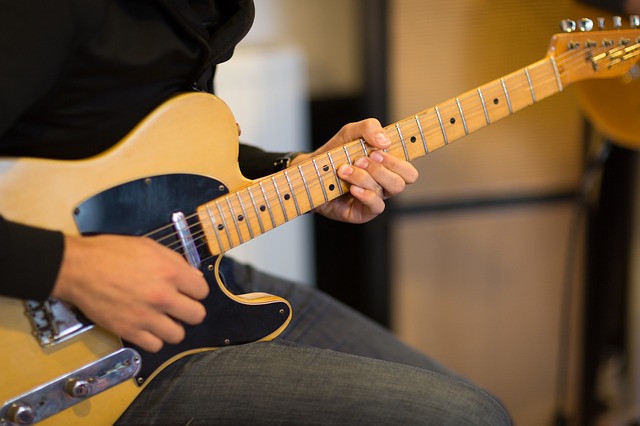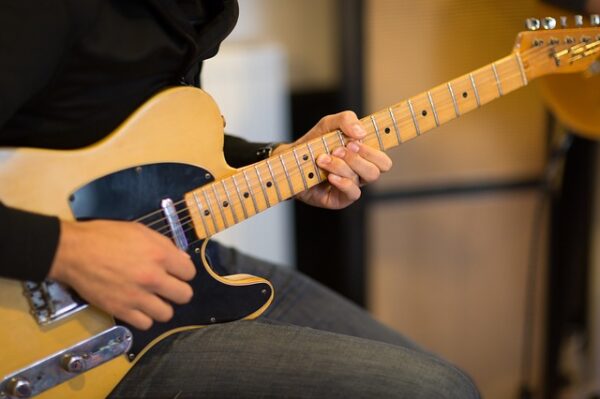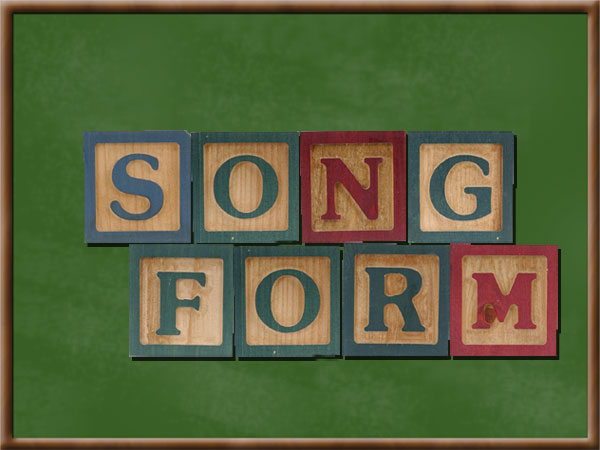5 Tips to Turn a Guitar Riff Into a Song


After the first attempt, even the most seasoned guitar players realized that songwriting is a horse of a different color. Don’t be disheartened by the new challenge and its learning curve. A well-composed song is a permanent reflection of you as an artist.
In this post, I’ll share five handy (interconnected) tips that will help you turn a good guitar riff into a great song. Of course, my method isn’t the only way to go about it. But I learned it from the pros and found it to be immensely helpful.
So, with the hope that you can accomplish your creative goals with it, let’s get to it.
#1: Define the idea and intention
A song is a story, either told with music, words, or both. With a great riff, we’ve got the rhythmic idea that will act as the foundation of a song. However, it is still just a melodic direction that can go wayward with spontaneous jamming at this point.
I strongly suggest taking a pen and paper to write down what do you want to convey with the song at this point. It will create a finite boundary, set an intention, and narrow down your aesthetic and creative options.
This is the point where you decide what role will your nifty guitar riff play in the song. Does it play in verse, chorus, or both? Is it a hook or resolving riff? Take a while to picture the song in your head before you run with the idea.
You are more likely to finish a song/composition if you’ve sorted out the creative direction. Trial and error can lead to amazing songs, but more often than not it will end up in an incomplete, incoherent, and haphazard composition that will forever haunt some to-do list.
Consider this step one. Don’t trifle with step one. Only move to the next step when you have a key to play in, a theme to write lyrics and a broad understanding of the feel and emotions that you want to deliver to your audience.
#2 Record to a DAW to create a structure
Now, we’ve got a firm grip on what we want to achieve. The next step is taking action on it. I’ll assume that you have access (and the know-how) to use a Digital Audio Workstation. You need a reliable way to record the riff and start working on it.
Start with a new project in your DAW and give the song a title. You don’t need anything fancy, a free full-featured DAW like Audacity will do the trick. I usually lay down a drum track or select a sampled beat that goes well with my guitar riff.
Once that’s done, I start with the structure. Most songs use some combination of intro/verse/chorus/bridge. You’ll need to set up a makeshift structure, to begin with. Don’t obsess over the finality, you can add or remove things at any point.
If you are new to songwriting, keep it as simple as possible. Right now, our motive is to create the ‘skeleton’ of the song and have a clean, visual representation. We can embellish it when new ideas appear.
At this point, you can also add some bass, keys/organ/pads, or any other VST-based instrument to the project. Again, don’t crowd the project and let the guitar riff shine.
#3 Add vocals and/or lyrics
We’ve defined our composition with a solid intent and structure. It’s time to focus on the counterpoint. We’ll work with the assumption that this isn’t an instrumental track. So, our first major accomplishment will be to add vocals.
Vocals, when sung over a guitar riff, act as a counterpoint. They become two melodic lines that have interdependent rhythm but independent harmony. They can be contradictory, acting as a counterpoint, or complementary – although that is less common.
You can either work on the chorus or verse, whichever section features your riff. Since we took time in step 1 to select a theme, you should have a clear framework to write the lyrics. If you struggle with writing lyrics, you can just sing some gibberh and record that instead.
When I’m struggling with writer’s block, I hum an incoherent vocal melody and record it. Then I copy-paste it to all the ‘verses’ in the project in my DAW. I can always come back to work on the lyrics. The actual words aren’t important to the structure at this point.
Either way, good lyrics are a work in progress, seldom written in one go unless you are an exemplary writer. There are times when I can’t seem to write anything worthwhile after several attempts. If you share that outcome, collaborate with a lyricist or a friend with poetic talents.
#4 Add a Chorus
A verse and a chorus often work in conjunction. Songs typically keep it mellow in the verse and pump it up in the chorus. The verse carries the meaning (with long and varying lines) while a chorus is characteristically catchy and repetitive.
This means you need to figure out how to add some zing in the musical elements and an engaging chorus melody that compels your audience to sing along.
Use a common chord progression based on the key that your riff is in. If you are a beginner, start with a simple, repetitive but melodious chorus. Don’t equate complexity with skill.
Listen to songs like Breaking the Law (Judas Priest), You Really Got Me (Kinks), Smoke on the Water (Deep Purple), and Sweet Child O’ Mine (Guns N’ Roses). They are chart-topping hits from legendary artists who have demonstrated the true power of repetition.
Once you come up with a chorus, do the same thing you did with the verse. Record it to your DAW. Loop it to all the sections you have reserved for the chorus. Add some bass, keys, or other musical instruments that are integral to the structure.
#5 Time to improve, embellish and experiment
With steps 1 through 4, we’ve created a theme and recorded our riff in a DAW. We demarcated the sections, recorded the riff, and worked out a verse/chorus. By now, you should have a ‘rough sketch’ or a skeletal structure for your composition.
It’s time to start work on the individual sections and adding embellishments. I always advocate developing the song in sections, especially if you are a beginner. Just listen to the song and note down some parts that need improvement. Pick one and work on it.
This includes:
- connecting the sections (chorus to verse or bridge to chorus),
- fine-tuning the chord progressions (add some passing chords, or secondary dominants),
- add a music piece (guitar solo or organ solo), and d) work on the final draft for the lyrics.
Once each part is at a satisfactory level, you can start working on the overall structure. Take your sweet time on each of these tasks. It is not easy to create a natural flow and add embellishments in one session, especially if you’re new to songwriting.
Final Thoughts
My biggest tip to new songwriters is to keep it simple. Your guitar riff prompted you to write a song, let it shine. DAWs can give you access to a lot of VST instruments. But do you really need a trumpet or clarinet? Are those strings adding or detracting from your idea? It’s easy to get carried away and add parts that wouldn’t even be playable in a real-life scenario.
I hope these tips will get you going and lead to your first ‘completed’ song. Don’t get frustrated when you hit a dead end. Even great artists like Bob Dylan proclaim that they’ve discarded twice as many ideas as they’ve recorded in a studio album. The important is to keep at it.
Brian–content director | dude in chargee: KillerGuitarRigs.com







Leave a Reply